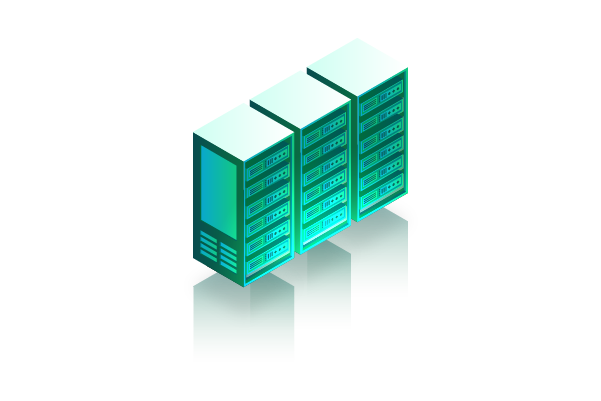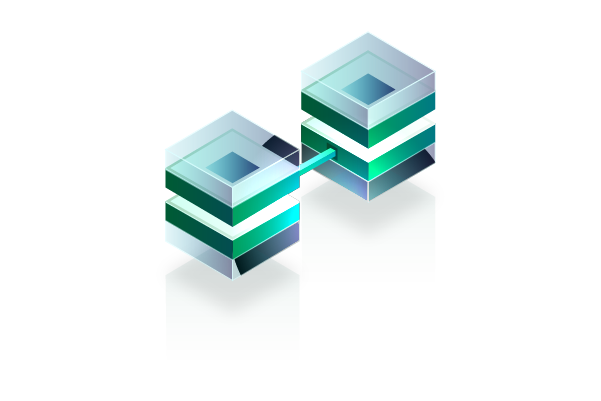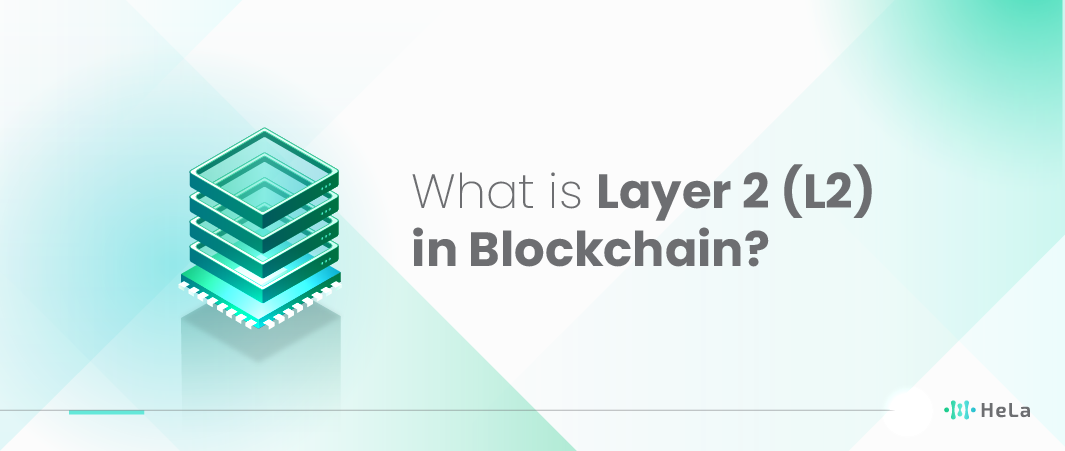The blockchain landscape is rapidly evolving, with Layer 2 (L2) solutions emerging as pivotal technologies that promise to scale blockchain networks to unprecedented levels. At its core, Layer 2 refers to a secondary framework or protocol built on top of an existing blockchain system. The primary aim of L2 solutions is to address the scalability and speed challenges that many blockchain networks face, thereby enabling faster transactions, reduced costs, and improved overall performance. In this article, we will delve into the intricacies of Layer 2 solutions, exploring their mechanisms, benefits, and the transformative potential they hold for the future of blockchain technology.
Blockchain technology, with its promise of decentralization, transparency, and security, has captivated the imagination of the tech world. However, as the technology has gained popularity, its limitations in terms of scalability and transaction speed have become apparent. This is where Layer 2 solutions come in, offering a beacon of hope for overcoming these hurdles without compromising the core principles of blockchain technology. By unpacking the concept of Layer 2, we gain insights into its crucial role in enhancing the performance of blockchain networks.
Understanding Layer 2 is essential for anyone interested in the future of blockchain and digital currencies. As we move forward, we will explore the different types of Layer 2 solutions, their working mechanisms, and how they seamlessly integrate with underlying blockchain systems to provide a more scalable and efficient digital ledger technology. Whether you are a blockchain enthusiast, a developer, or simply curious about the future of digital transactions, this article aims to provide a comprehensive overview of Layer 2 solutions and their significance in the blockchain ecosystem.
The Need for Layer 2 Solutions
In the rapidly evolving world of blockchain technology, the surge in the popularity and application of various blockchain platforms has cast a spotlight on a critical issue: scalability. Traditional blockchain networks, which were primarily designed to prioritize security and decentralization, are increasingly facing difficulties in coping with the surge in transaction volumes. This scalability dilemma is not just a technical inconvenience; it’s a significant barrier to the widespread adoption and practical implementation of blockchain technology for regular, everyday transactions.
At the heart of this issue is the way traditional blockchains are structured. Each transaction on the network must be verified by a consensus mechanism, which, while ensuring security and trust, significantly limits the system’s throughput. As more transactions vie for processing, the network becomes congested, leading to slower transaction times and, often, exorbitant fees. This not only affects the user experience but also limits the potential applications of blockchain technology in sectors that require quick and cost-effective transaction processing, such as finance, supply chain management, and beyond.
Also Read: 10+ Best Web3 Wallets to Consider in 2024
Layer 2 solutions have been developed as a direct response to this challenge. They represent a diverse set of technologies and approaches designed to enhance the scalability of blockchain networks without compromising their foundational principles of decentralization and security. By processing transactions off the main blockchain (Layer 1) and only interacting with it to finalize the results, Layer 2 solutions can significantly increase the network’s capacity and speed. This approach not only alleviates the congestion on the main blockchain but also reduces transaction costs, making blockchain technology more accessible and practical for a wider range of applications.
There are various types of Layer 2 solutions, each with its unique mechanisms and advantages. Some of the most prominent include state channels, sidechains, and rollups. State channels allow participants to conduct numerous transactions off-chain, with the blockchain only getting involved at the outset and conclusion of the transaction sequence. Sidechains are distinct blockchains that are connected to the main blockchain, enabling the offloading of transactions to a parallel platform that can process them more efficiently. Rollups bundle or “roll up” multiple transactions into a single transaction that is then processed on the main blockchain, dramatically reducing the number of transactions that need to be individually processed on Layer 1.
The development and implementation of Layer 2 solutions are crucial for the future of blockchain technology. They offer a promising path forward, one that can potentially unlock the full potential of blockchain applications across various industries. By addressing the scalability issue, Layer 2 solutions not only improve the functionality and efficiency of blockchain networks but also ensure that the technology can continue to grow and evolve, meeting the demands of an increasingly digital and interconnected world.
What is Layer 2 in Blockchain?

In the context of blockchain technology, Layer 2 refers to scaling solutions built on top of a blockchain’s base layer (Layer 1), aiming to improve the network’s performance, scalability, and efficiency. Layer 2 solutions address the limitations of Layer 1, such as high transaction fees, slow transaction times, and limited throughput, by moving some of the computational and transactional workload off-chain while still leveraging the security of the underlying blockchain.
One of the most prominent Layer 2 solutions is the Lightning Network for Bitcoin and similar payment channel networks for other cryptocurrencies. These solutions enable off-chain micropayments and instant transactions by establishing bi-directional payment channels between participants. Transactions occur off-chain, meaning they are not recorded on the main blockchain immediately, but participants can settle their balances on-chain whenever they wish, ensuring security and trustlessness.
Another type of Layer 2 solution is sidechains, which are independent blockchains interoperable with the main blockchain. Sidechains allow for specific use cases or applications to run independently with their own consensus mechanisms and rules, reducing congestion on the main blockchain. Projects like the Liquid Network for Bitcoin and various Ethereum-compatible sidechains provide faster transaction processing and additional functionality while maintaining compatibility with the main blockchain.
State channels and plasma chains are Layer 2 solutions that enable scalable and efficient smart contract execution on blockchain platforms like Ethereum. State channels allow participants to conduct multiple transactions off-chain and only settle the final state on the main blockchain, reducing congestion and costs. Plasma chains, on the other hand, are designed to process a high volume of transactions by aggregating them into “child” blockchains, which periodically submit a summary to the main blockchain, enhancing scalability.
Layer 2 solutions in blockchain technology offer innovative approaches to address scalability challenges by offloading transactions and computation from the main blockchain while preserving security and decentralization. These solutions enable faster, cheaper, and more scalable transactions, paving the way for broader adoption of blockchain technology in various industries and applications.
Types of Layer 2 Solutions

Layer 2 solutions are advanced mechanisms designed to enhance the scalability and efficiency of blockchain networks. These solutions operate on top of the base layer (Layer 1), which is the main blockchain, aiming to improve transaction speed and reduce costs without compromising the network’s security. Here’s a deeper dive into the most common types of Layer 2 solutions:
State Channels
These are protocols that allow users to conduct transactions and interact with smart contracts off-chain. The idea is to open a channel between participating parties where they can transact privately and rapidly. Only the opening and closing balances are recorded on the main blockchain, significantly reducing transaction fees and congestion. State Channels are ideal for applications requiring high transaction throughput and minimal latency, such as gaming or instant payments.
Sidechains
A sidechain is an independent blockchain that runs in parallel to the main blockchain. It has its own consensus mechanism and can have different block parameters (like block time, transaction fees, etc.) to serve specific use cases. Tokens and assets can be transferred between the main blockchain and the sidechain, enabling a scalable solution for handling transactions. Sidechains offer the flexibility to experiment with different blockchain rules without affecting the main chain’s integrity.
Plasma
Plasma is a framework for building scalable applications by creating child blockchains (or “Plasma chains”) linked to the main blockchain. Each child chain can perform transactions and smart contract executions independently, with the main chain acting as the ultimate layer of security. Periodically, the state of these child chains is committed to the main blockchain, ensuring integrity and security. Plasma is designed to massively scale the network’s capacity by offloading transactions from the main chain.
Rollups
Rollups are a solution that aggregates multiple off-chain transactions into a single transaction that is then submitted to the main blockchain. This approach can significantly reduce the strain on the network by decreasing the number of transactions that need to be processed individually. There are two main types of rollups: Optimistic Rollups and Zero-Knowledge Rollups. Optimistic Rollups assume transactions are valid by default and only run computations in case of a dispute. Zero-Knowledge Rollups, on the other hand, use cryptographic proofs to verify the validity of transactions before they are posted to the main chain.
Each Layer 2 solution offers a unique approach to solving the scalability puzzle, allowing blockchain networks to support more users and applications efficiently. By leveraging these solutions, blockchain ecosystems can achieve higher transaction throughput, lower fees, and improved user experiences, all while maintaining the decentralized and secure nature of the underlying Layer 1 blockchain.
Implementing Layer 2 Solutions

Implementing Layer 2 (L2) solutions is a critical step for scaling blockchain networks, aiming to address the challenges of scalability, speed, and transaction costs without compromising the security and decentralization of the underlying Layer 1 (L1) blockchain. The essence of L2 technologies lies in their ability to process transactions off the main blockchain, thereby reducing congestion and improving transaction throughput. This involves a variety of strategies, including but not limited to state channels, sidechains, rollups, and plasma chains, each with its unique approach to handling transactions off-chain while ensuring finality and security back on the main chain.
Technical Considerations
- Understanding Blockchain Architecture: A profound comprehension of the L1 blockchain’s architecture is essential. Developers must be familiar with its consensus mechanisms, smart contract capabilities, and potential bottlenecks to effectively leverage L2 solutions.
- Choosing the Right L2 Solution: There’s a plethora of L2 technologies available, each suited for different use cases. For instance, state channels are ideal for applications with a high volume of transactions among a fixed group of participants, whereas rollups are better suited for general-purpose scalability solutions.
- Integration Complexity: Seamlessly integrating an L2 solution with the existing L1 blockchain can be complex. It requires modifications to smart contracts, infrastructure adjustments, and sometimes the development of new interfaces or APIs for interaction between the layers.
- Security Considerations: While L2 solutions alleviate the load on the L1 blockchain, they also introduce new security considerations. The mechanisms for dispute resolution, fraud proofs, and data availability must be thoroughly vetted to maintain the integrity and trustworthiness of the blockchain.
Strategic Considerations
- User Experience: The integration of L2 solutions should be transparent to the end-users. It’s crucial to maintain, if not enhance, the user experience by ensuring that transactions remain fast, cost-effective, and easy to execute.
- Network Effects: The adoption of L2 solutions might depend on network effects, where the value of the solution increases as more participants use it. Strategically incentivizing early adopters and ensuring interoperability with other solutions can be beneficial.
- Future-Proofing: The blockchain space is rapidly evolving, with new L2 solutions and improvements being developed. Implementing an L2 solution requires a forward-looking approach, considering not only the current needs but also how the chosen solution can adapt to future demands and technological advances.
Outcome and Innovations
Successfully implementing L2 solutions can significantly enhance the performance and utility of blockchain networks. It opens the door to a new wave of applications and services that were previously impractical due to scalability limitations. For example, decentralized finance (DeFi) platforms, non-fungible token (NFT) marketplaces, and complex decentralized applications (dApps) can operate more efficiently and at a larger scale. Furthermore, L2 solutions can facilitate new models of governance, tokenomics, and community-driven innovations, contributing to the broader adoption and maturation of blockchain technology.
The implementation of L2 solutions is a multifaceted endeavor that demands a blend of technical acumen and strategic foresight. It’s not merely about choosing and integrating a technology but about envisioning and enabling the future landscape of blockchain applications and services.
Challenges and Limitations of Layer 2

Layer 2 solutions, designed to enhance the scalability, speed, and efficiency of blockchain networks, face several challenges and limitations that must be addressed to fully realize their potential. One primary concern is the technical complexity involved in developing these solutions and integrating them seamlessly with existing blockchain frameworks. This complexity not only makes the development process more difficult but also poses a barrier to adoption, as users and developers must navigate these additional layers of technology.
Security concerns represent another significant challenge. While Layer 2 solutions aim to retain the security guarantees of the underlying blockchain, the introduction of new protocols and mechanisms can introduce vulnerabilities. These vulnerabilities could potentially be exploited, undermining the security of transactions and smart contracts that operate on these platforms.
Also Read: 7 Best Crypto Exchanges in Global Market
Furthermore, there’s the issue of potential centralization. Many Layer 2 solutions rely on a smaller number of validators or operators to process transactions or manage state channels. This concentration of control could lead to centralization, which is antithetical to the decentralized ethos of blockchain technology. Such centralization could compromise not only the security but also the censorship resistance and trustlessness that are hallmarks of blockchain technology.
Addressing these challenges requires a concerted effort from the blockchain community, including developers, researchers, and users. Ongoing research and development are crucial to refining Layer 2 solutions, ensuring they are secure, efficient, and compatible with existing systems. Moreover, fostering collaboration within the community can lead to the sharing of best practices, innovations, and solutions that mitigate the risks of centralization and security vulnerabilities. Ultimately, overcoming these obstacles is essential for Layer 2 solutions to deliver on their promise of making blockchain networks more scalable, faster, and efficient without sacrificing their core principles.
The Future of Layer 2 Solutions
The future of Layer 2 solutions in the blockchain ecosystem is marked by significant optimism, driven by their potential to address one of the most pressing challenges facing blockchain technology today: scalability. Layer 2 solutions are essentially built on top of existing blockchains (Layer 1), functioning as an additional layer that can process transactions more quickly and cheaply than the underlying main blockchain. This is achieved through various mechanisms such as state channels, sidechains, rollups, and plasma chains, each offering unique approaches to offload transactions from the main chain, thereby enhancing throughput and reducing costs.
As we look ahead, the continuous development and adoption of Layer 2 technologies are expected to bring about a transformative impact on blockchain networks. This impact will be characterized by:
- Greater Scalability: By efficiently handling transactions off the main chain, Layer 2 solutions are set to drastically increase the transaction processing capacity of blockchain networks. This scalability is critical for supporting the growing user base and increasingly complex applications.
- Enhanced Efficiency: Layer 2 solutions reduce the burden on the main chain, leading to faster transaction times and lower fees. This efficiency makes blockchain technology more accessible and practical for everyday use and for applications requiring high throughput.
- Expanded Utility: With the scalability and efficiency barriers addressed, blockchain networks will be capable of supporting a wider array of applications. This could include everything from microtransactions in gaming and social media to complex financial instruments in the decentralized finance (DeFi) space.
- Innovation in Use Cases: The improved performance and reduced operational costs will enable new use cases that were previously untenable. These could range from real-time, decentralized streaming services to large-scale IoT networks, all running in a decentralized and secure manner.
- Integration and Interoperability: As Layer 2 solutions mature, there will be a stronger focus on ensuring these layers can seamlessly interact with each other and with Layer 1 blockchains. This interoperability is crucial for creating a cohesive and efficient ecosystem where assets and information can flow freely across different platforms and solutions.
- Focus on Security and Decentralization: While pursuing scalability and efficiency, the development of Layer 2 solutions will also emphasize maintaining the security and decentralization principles of blockchain technology. Balancing these aspects is vital for sustaining trust in these platforms and for the long-term success of blockchain networks.
The advancement of Layer 2 solutions represents a pivotal moment in the evolution of blockchain technology. By addressing the fundamental challenges of scalability and efficiency, these solutions are not just enhancing the performance of existing applications but are also unlocking the door to a future filled with innovative decentralized applications and digital economies. As such, the potential impact of Layer 2 technologies on the blockchain landscape cannot be overstated, signaling a new chapter of growth and possibilities.
Conclusion
Layer 2 solutions represent a significant step forward in the evolution of blockchain technology. By addressing the critical issue of scalability, these solutions unlock new opportunities for innovation, efficiency, and adoption. As we have explored, the implementation of Layer 2 solutions is complex and requires careful consideration, but the potential benefits are immense. The future of blockchain technology is intertwined with the success of Layer 2 solutions, as they hold the key to overcoming current limitations and realizing the full potential of decentralized digital systems.
The challenges and limitations associated with Layer 2 solutions remind us that innovation is a continuous process, requiring collaboration, experimentation, and refinement. As the blockchain community works to address these challenges, we can expect to see more robust, secure, and scalable solutions emerge, further enhancing the appeal and utility of blockchain technology.
In conclusion, Layer 2 solutions are more than just a technological innovation; they are a pivotal development that could shape the future of digital transactions, decentralized applications, and the broader blockchain ecosystem. As we move forward, embracing these solutions and the opportunities they present will be crucial for anyone looking to harness the power of blockchain technology in an increasingly digital world.
Disclaimer: The information provided by HeLa Labs in this article is intended for general informational purposes and does not reflect the company’s opinion. It is not intended as investment advice or recommendations. Readers are strongly advised to conduct their own thorough research and consult with a qualified financial advisor before making any financial decisions.

Joshua Soriano
I am Joshua Soriano, a passionate writer and devoted layer 1 and crypto enthusiast. Armed with a profound grasp of cryptocurrencies, blockchain technology, and layer 1 solutions, I've carved a niche for myself in the crypto community.
-
Joshua Soriano#molongui-disabled-link
-
Joshua Soriano#molongui-disabled-link
-
Joshua Soriano#molongui-disabled-link
-
Joshua Soriano#molongui-disabled-link

